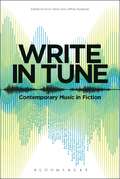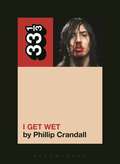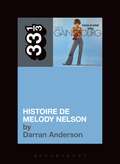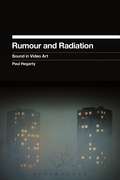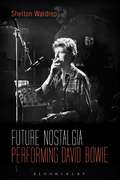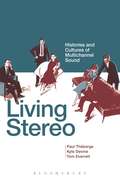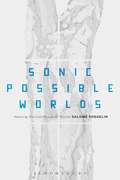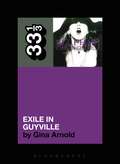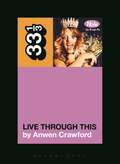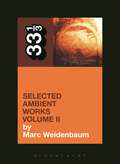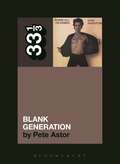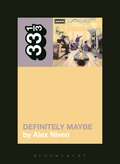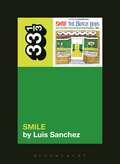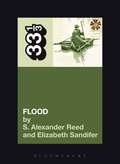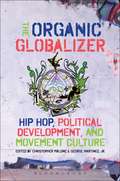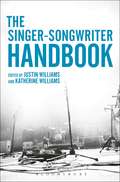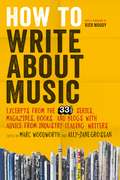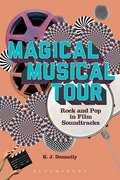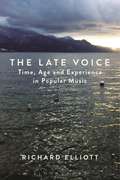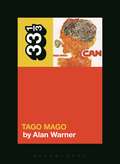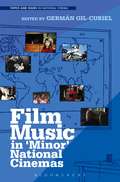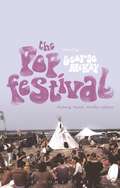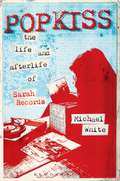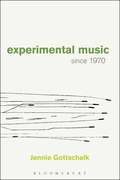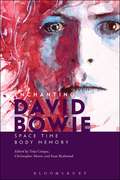- Table View
- List View
Write in Tune: Contemporary Music In Fiction
by Erich Hertz Jeffrey RoessnerContemporary popular music provides the soundtrack for a host of recent novels, but little critical attention has been paid to the intersection of these important art forms. Write in Tune addresses this gap by offering the first full-length study of the relationship between recent music and fiction. With essays from an array of international scholars, the collection focuses on how writers weave rock, punk, and jazz into their narratives, both to develop characters and themes and to investigate various fan and celebrity cultures surrounding contemporary music. Write in Tune covers major writers from America and England, including Don DeLillo, Jonathan Franzen, Zadie Smith, and Jim Crace. But it also explores how popular music culture is reflected in postcolonial, Latino, and Australian fiction. Ultimately, the book brings critical awareness to the power of music in shaping contemporary culture, and offers new perspectives on central issues of gender, race, and national identity.
Andrew W.K.'s I Get Wet (33 1/3)
by Phillip Crandall"It's Time To Party," the first track off of I Get Wet, opens with a rapid-fire guitar line - nothing fancy, just a couple crunchy power chords to acclimate the ears - repeated twice before a booming bass drum joins in to provide a quarter-note countdown. A faint, swirling effect intensifies with each bass kick and, by the eighth one, the ears have prepped themselves for the metal mayhem they are about to receive. When it all drops, and the joyous onslaught of a hundred guitars is finally realized, you'll have to forgive your ears for being duped into a false sense of security, because it's that second intensified drop a few seconds later - the one where yet more guitars manifest and Andrew W.K. slam-plants his vocal flag by screaming the song's titular line - that really floods the brain with endorphins, serotonin, dopamine, and whatever else formulates invincibility.Polished to a bright overdubbed-to-oblivion sheen, the party-preaching I Get Wet didn't capture the zeitgeist of rock at the turn of the century; it captured the timelessness of youth, as energized, awesome, and unapologetically stupid as ever. With insights from friends and unprecedented help from the mythological maniac himself - whose sermon and pop sensibilities continue to polarize - this book chronicles the sound's evolution, uncovers the relevance of Steev Mike, and examines how Andrew W.K.'s inviting, inclusive lyrics create the ultimate shared experience between artist and audience.
Serge Gainsbourg's Histoire de Melody Nelson (33 1/3)
by Darran AndersonOutside his native France, the view of Serge Gainsbourg was once of a one-hit wonder lothario. This has been slowly replaced by an awareness of how talented and innovative a songwriter he was. Gainsbourg was an eclectic, protean figure; a Dadaist, poète maudit, Pop-Artist, libertine and anti-hero. An icon and iconoclast. His masterpiece is arguably Histoire de Melody Nelson, an album suite combining many of his signature themes; sex, taboo, provocation, humour, exoticism and ultimately tragedy. Composed and arranged with the great Jean-Claude Vannier, its score of lush cinematic strings and proto-hip hop beats, combined with Serge's spoken-word poetry, has become remarkably influential across a vast musical spectrum; inspiring soundtracks, indie groups and electronic artists. In recent years, the album's reputation has grown from cult status to that of a modern classic with the likes of Beck, Portishead, Mike Patton, Air and Pulp paying tribute. How did the son of Jewish Russian immigrants, hounded during the Nazi Occupation, rise to such notoriety and acclaim, being celebrated by President François Mitterand as "our Baudelaire, our Apollinaire"? How did the early chanson singer evolve into a musical visionary incorporating samples, breakbeats and dub into his music, decades ahead of the curve? And what are the roots and legacy of a concept album about a Rolls Royce, a red-haired Lolita muse, otherworldly mansions, plane crashes and Cargo Cults?
Rumour and Radiation: Sound in Video Art
by Paul HegartyThis is a book about video art, and about sound art. The thesis is that sound first entered the gallery via the video art of the 1960s and in so doing, created an unexpected noise. The early part of the book looks at this formative period and the key figures within it - then jumps to the mid-1990s, when video art has become such a major part of contemporary art production, it no longer seems an autonomous form. Paul Hegarty considers the work of a range of artists (including Steve McQueen, Christian Marclay, Ryan Trecartin, and Jane and Louise Wilson), proposing different theories according to the particular strategy of the artist under discussion. Connecting them all are the twinned ideas of intermedia and synaesthesia. Hegarty offers close readings of video works, as influenced by their sound, while also considering the institutional and material contexts. Applying contemporary sound theory to the world of video art, Paul Hegarty offers an entirely fresh perspective on the interactions between sound, sound art, and the visual.
Future Nostalgia: Performing David Bowie
by Shelton WaldrepAlthough David Bowie has famously characterized himself as a "leper messiah," a more appropriate moniker might be "rock god": someone whose influence has crossed numerous sub-genres of popular and classical music and can at times seem ubiquitous. By looking at key moments in his career (1972, 1977-79, 1980-83, and 1995-97) through several lenses-theories of sub-culture, gender/sexuality studies, theories of sound, post-colonial theory, and performance studies Waldrep examines Bowie's work in terms not only of his auditory output but his many reinterpretations of it via music videos, concert tours, television appearances, and occasional movie roles. Future Nostalgia looks at all aspects of Bowie's career in an attempt to trace Bowie's contribution to the performative paradigms that constitute contemporary rock music.
Living Stereo: Histories and Cultures of Multichannel Sound
by Kyle Devine Paul Théberge Tom EverrettStereo is everywhere. The whole culture and industry of music and sound became organized around the principle of stereophony during the twentieth century. But nothing about this-not the invention or acceptance or ubiquity of stereo-was inevitable. Nor did the aesthetic conventions, technological objects, and listening practices required to make sense of stereo emerge fully formed, out of the blue.This groundbreaking book uncovers the vast amount of work that has been required to make stereo seem natural, and which has been necessary to maintain stereo's place as a dominant mode of sound reproduction for over half a century. The essays contained within this book are thematically grouped under (Audio) Positions, Listening Cultures, and Multichannel Sound and Screen Media; the cumulative effect is to advance research in music, sound, and media studies and to build new bridges between the fields.With contributions from leading scholars across several disciplines, Living Stereo re-tells the history of twentieth-century aural and musical culture through the lens of stereophonic sound.
Sonic Possible Worlds: Hearing the Continuum of Sound
by Salomé VoegelinInspired by its use in literary theory, film criticism and the discourse of game design, Salomé Voegelin adapts and develops “possible world theory” in relation to sound. David K Lewis' Possible World is juxtaposed with Maurice Merleau-Ponty's life-world, to produce a meeting of the semantic and the phenomenological at the place of listening. The central tenet of Sonic Possible Worlds is that at present traditional musical compositions and contemporary sonic outputs are approached and investigated through separate and distinct critical languages and histories. As a consequence, no continuous and comparative study of the field is possible. In Sonic Possible Worlds, Voegelin proposes a new analytical framework that can access and investigate works across genres and times, enabling a comparative engagement where composers such as Henry Purcell and Nadia Boulanger encounter sound art works by Shilpa Gupta and Christina Kubisch and where the soundscape compositions of Chris Watson and Francisco López resound in the visual worlds of Louise Bourgeois.
Liz Phair's Exile in Guyville (33 1/3)
by Gina ArnoldAlthough Exile in Guyville was celebrated as one of the year's top records by Spin and the New York Times, it was also, to some, an abomination: a mockery of the Rolling Stones' most revered record and a rare glimpse into the psyche of a shrewd, independent, strong young woman. For these crimes, Liz Phair was run out of her hometown of Chicago, enduring a flame war perpetrated by writers who accused her of being boring, inauthentic, and even a poor musician. With Exile in Guyville, Phair spoke for all the girls who loved the world of indie rock but felt deeply unwelcome there. Like all great works of art, Exile was a harbinger of the shape of things to come: Phair may have undermined the male ego, but she also unleashed a new female one. For the sake of all the female artists who have benefited from her work-from Sleater-Kinney to Lana Del Rey and back again-it's high time we go back to Guyville.
Hole's Live Through This (33 1/3)
by Anwen CrawfordCourtney Love has never been less than notorious. Her intelligence, ambition and appetite for confrontation have made her a target in a music industry still dominated by men. As Kurt Cobain's wife she was derided as an opportunistic groupie; as his widow she is pitied, and scorned, as the madwoman in rock's attic. Yet Hole's second album, Live Through This, awoke a feminist consciousness in a generation of young listeners.Live Through This arrived in 1994, at a tumultuous point in the history of American music. Three years earlier Nirvana's Nevermind had broken open the punk underground, and the first issue of a zine called Riot Grrrl had been published. Hole were of this context and yet outside of it: too famous for the strict punk ethics of riotgrrrl, too explicitly feminist to be the world's biggest rock band.Live Through This is an album about girlhood and motherhood; desire and disgust; self-destruction and survival. There have been few rock albums before or since so intimately concerned with female experience. It is an album that changed lives – so why is Courtney Love's achievement as a songwriter and musician still not taken seriously, two decades on?
Aphex Twin's Selected Ambient Works Volume II (33 1/3)
by Marc WeidenbaumExtravagantly opaque, willfully vaporous - Aphex Twin's Selected Ambient Works Volume II, released by the estimable British label Warp Records in 1994, rejuvenated ambient music for the Internet Age that was just dawning. In the United States, it was Richard D. James's first full length on Sire Records (home to Madonna and Depeche Mode) under the moniker Aphex Twin; Sire helped usher him in as a major force in music, electronic or otherwise.Faithful to Brian Eno's definition of ambient music, Selected Ambient Works Volume II was intentionally functional: it furnished chill out rooms, the sanctuaries amid intense raves. Choreographers and film directors began to employ it to their own ends, and in the intervening decades this background music came to the fore, adapted by classical composers who reverse-engineered its fragile textures for performance on acoustic instruments. Simultaneously, "ambient†? has moved from esoteric sound art to central tenet of online culture. This book contends that despite a reputation for being beatless, the album exudes percussive curiosity, providing a sonic metaphor for our technologically mediated era of countless synchronized nanosecond metronomes.
Richard Hell and the Voidoids' Blank Generation (33 1/3)
by Pete AstorTo wander the streets of a bankrupt, often lawless, New York City in the early 1970s wearing a T-shirt with PLEASE KILL ME written on it was an act of determined nihilism, and one often recounted in the first reports of Richard Hell filtering into the pre-punk UK. Pete Astor, an archly nihilistic teenager himself at the time, was most impressed. The fact that it emerged (after many years) that Hell himself had not worn the T-shirt but had convinced junior band member Richard Lloyd to do so, actually fitted very well with Astor's older, wiser self looking back at Blank Generation. Richard Hell was an artist who could not only embody but also frame the punk urge; having seeded and developed the essential look and character of punk since his arrival in New York in the late 1960s, he had just what was needed to make one of the defining records of the era.This study combines objective, academic perspectives along with culturally centred subjectivities to understand the meanings and resonances of Richard Hell and the Voidoids' Blank Generation.
Oasis' Definitely Maybe (33 1/3)
by Alex NivenOasis's incendiary 1994 debut album Definitely Maybe managed to summarize almost the entire history of post-fifties guitar music from Chuck Berry to My Bloody Valentine in a way that seemed effortless. But this remarkable album was also a social document that came closer to narrating the collective hopes and dreams of a people than any other record of the last quarter century. In a Britain that had just undergone the most damaging period of social upheaval in a century under the Thatcher government, Noel Gallagher ventriloquized slogans of burning communitarian optimism through the mouth of his brother Liam and the playing of the other Oasis 'everymen': Paul McGuigan, Paul Arthurs and Tony McCarroll. On Definitely Maybe, Oasis communicated a timeworn message of idealism and hope against the odds, but one that had special resonance in a society where the widening gap between high and low demanded a newly superhuman kind of leaping. Alex Niven charts the astonishing rise of Oasis in the mid 1990s and celebrates the life-affirming, communal force of songs such as "Live Forever,†? "Supersonic,†? and "Cigarettes & Alcohol.†? In doing so, he seeks to reposition Oasis in relation to their Britpop peers and explore one of the most controversial pop-cultural narratives of the last thirty years.
The Beach Boys' Smile (33 1/3)
by Luis SanchezSmile is not merely a great unfinished album, but a living work of art that is all at once expansive, indeterminate, and resolutely pop.In the early 1960s, The Beach Boys rose from the suburbs of Hawthorne, California to become emissaries of a post-war American dream that fused middle-class aspiration and mobility with images of youth. Led by dream master Brian Wilson, their music gave voice to a Southern California mythos and compelled an audience across the nation and beyond to live out their own versions of the fantasy. By 1966, the encroaching counterculture added new dimensions of creative possibility to popular music. Looking to revise and expand, Brian Wilson sought collaboration with a brilliant musician named Van Dyke Parks. Together they began work on Smile, an ambitious album of music that refracted The Beach Boys' naïveté into a visionary exploration of American consciousness. Smile edged so close to greatness it seemed destined to become one of the most significant musical advances of its time. But the story didn't end quite like this. In this book of evocative essays, Sanchez traces the musical journey that transformed The Beach Boys from West Coast surf heroes into America's pop luminaries, and ultimately why Smile represents a tumultuous turning point in the history of popular music.
They Might Be Giants' Flood (33 1/3)
by S. Alexander Reed Philip SandiferFor a few decades now, They Might Be Giants' album Flood has been a beacon (or at least a nightlight) for people who might rather read than rock out, who care more about science fiction than Slayer, who are more often called clever than cool. Neither the band's hip origins in the Lower East Side scene nor Flood's platinum certification can cover up the record's singular importance at the geek fringes of culture. Flood's significance to this audience helps us understand a certain way of being: it shows that geek identity doesn't depend on references to Hobbits or Spock ears, but can instead be a set of creative and interpretive practices marked by playful excess-a flood of ideas. The album also clarifies an historical moment. The brainy sort of kids who listened to They Might Be Giants saw their own cultural options grow explosively during the late 1980s and early 1990s amid the early tech boom and America's advancing leftist social tides. Whether or not it was the band's intention, Flood's jubilant proclamation of an identity unconcerned with coolness found an ideal audience at an ideal turning point. This book tells the story.
The Organic Globalizer: Hip Hop, Political Development, and Movement Culture
by Christopher Malone George Martinez Jr.The Organic Globalizer is a collection of critical essays which takes the position that hip-hop holds political significance through an understanding of its ability to at once raise cultural awareness, expand civil society's focus on social and economic justice through institution building, and engage in political activism and participation. Collectively, the essays assert hip hop's importance as an “organic globalizer:” no matter its pervasiveness or reach around the world, hip-hop ultimately remains a grassroots phenomenon that is born of the community from which it permeates. Hip hop, then, holds promise through three separate but related avenues: (1) through cultural awareness and identification/recognition of voices of marginalized communities through music and art; (2) through social creation and the institutionalization of independent alternative institutions and non-profit organizations in civil society geared toward social and economic justice; and (3) through political activism and participation in which demands are articulated and made on the state.With editorial bridges between chapters and an emphasis on interdisciplinary and diverse perspectives, The Organic Globalizer is the natural scholarly evolution in the conversation about hip-hop and politics.
The Singer-Songwriter Handbook
by Katherine Williams Justin WilliamsThe singer-songwriter, someone who writes and performs their own music, is an ever-present and increasingly complex figure in popular music worlds. The Singer-Songwriter Handbook provides a useful resource for student songwriters, active musicians, fans and scholars alike. This handbook is divided into four main sections: Songwriting (acoustic and digital), Performance, Music Industry and Case Studies. Section I focuses on the 'how to' elements of popular song composition, embracing a range of perspectives and methods, in addition to chapters on the teaching of songwriting to students. Section II deals with the nature of performance: stagecraft, open mic nights, and a number of case studies that engage with performing in a range of contexts. Section III is devoted to aspects of the music industry and the business of music including sales, contract negotiations, copyright, social media and marketing. Section IV provides specific examples of singer-songwriter personae and global open mic scenes. The Singer-Songwriter Handbook is a much-needed single resource for budding singer-songwriters as well as songwriting pedagogues.
How to Write About Music: Excerpts from the 33 1/3 Series, Magazines, Books and Blogs with Advice from Industry-leading Writers
by Marc Woodworth Ally-Jane GrossanIf writing about music is like dancing about architecture, you'd do best to hone your chops and avoid clichés (like the one that begins this sentence) by learning from the prime movers. How to Write About Music offers a selection of the best writers on what is perhaps our most universally beloved art form. Selections from the critically-acclaimed 33 1/3 series appear alongside new interviews and insights from authors like Lester Bangs, Chuck Klosterman, Owen Pallet, Ann Powers and Alex Ross.How to Write About Music includes primary sources of inspiration from a variety of go-to genres such as the album review, the personal essay, the blog post and the interview along with tips, writing prompts and advice from the writers themselves.Music critics of the past and the present offer inspiration through their work on artists like Black Sabbath, Daft Punk, J Dilla, Joy Division, Kanye West, Neutral Milk Hotel, Radiohead, Pussy Riot and countless others. How to Write About Music is an invaluable text for all those who have ever dreamed of getting their music writing published and a pleasure for everyone who loves to read about music.
Magical Musical Tour: Rock and Pop in Film Soundtracks
by Kevin J. DonnellyWinner of the Southwest Popular and American Culture Association's 2016 Peter C. Rollins Book Award in the category of Film/TelevisionThe popular music industry has become completely interlinked with the film industry. The majority of mainstream films come with ready-attached songs that may or may not appear in the film but nevertheless will be used for publicity purposes and appear on a soundtrack album. In many cases, popular music in films has made for some of the most striking moments in films and the most dramatic aesthetic action in cinema, like Ben relaxing in the pool to Simon and Garfunkel's 'The Sound of Silence' in The Graduate (1967), and the potter's wheel sequence with the Righteous Brothers' 'Unchained Melody' in Ghost (1990). Yet, to date, there have only been patchy attempts to deal with popular music's relationship with film. Indeed, it is startling that there is so little written on subject that is so popular as a consumer item and thus has a significant cultural profile.Magical Musical Tour is the first sustained and focused survey to engage the intersection of the two on both an aesthetic and industrial level. The chapters are historically-inspired reviews, discussing many films and musicians, while others will be more concentrated and detailed case studies of single films. Including an accompanying website and a timeline giving a useful snapshot around which readers can orient the book, Kevin Donnelly explores the history of the intimate bond between film and music, from the upheaval that rock'n'roll caused in the mid-1950s to the more technical aspects regarding 'tracking' and 'scoring'.
The Late Voice: Time, Age and Experience in Popular Music
by Richard ElliottPopular music artists, as performers in the public eye, offer a privileged site for the witnessing and analysis of ageing and its mediation. The Late Voice undertakes such an analysis by considering issues of time, memory, innocence and experience in modern Anglophone popular song and the use by singers and songwriters of a 'late voice'. Lateness here refers to five primary issues: chronology (the stage in an artist's career); the vocal act (the ability to convincingly portray experience); afterlife (posthumous careers made possible by recorded sound); retrospection (how voices 'look back' or anticipate looking back); and the writing of age, experience, lateness and loss into song texts. There has been recent growth in research on ageing and the experience of later stages of life, focusing on physical health, lifestyle and psychology, with work in the latter field intersecting with the field of memory studies. The Late Voice seeks to connect age, experience and lateness with particular performers and performance traditions via the identification and analysis of a late voice in singers and songwriters of mid-late twentieth century popular music.
Can's Tago Mago (33 1/3)
by Alan WarnerFinally, a brilliant exploration of the German rock band Can's 1971 album Tago Mago. This hugely unique and influential album deserves close analysis from a fan, rather than a musicologist. Novelist Alan Warner details the concrete music we hear on the album, how it was composed, executed and recorded--including the history of the album in terms of its release, promotion and art work. This tale of Tago Mago is also the tale of a young man obsessed with record collecting in the dark and mysterious period of pop music before Google. Warner includes a backtracking of the history of the band up to that point and also some description of Can's unique recording approach taking into account their home studio set up.Interviews with the two surviving members: drummer Jaki Liebezeit, keyboardist Irmin Schmidt and bassist Holger Czukay make this a hilariously personal and illuminating picture of Can.
Film Music in 'Minor' National Cinemas (Topics and Issues in National Cinema)
by Germán Gil-CurielTaking its cue from Deleuze's definition of minor cinema as one which engages in a creative act of becoming, this collection explores the multifarious ways that music has been used in the cinemas of various countries in Australasia, Africa, Latin America and even in Europe that have hitherto received little attention. The authors consider such film music with a focus on the role it has played creating, problematizing, and sometimes contesting, the nation.Film Music in 'Minor' National Cinemas addresses the relationships between film music and the national cinemas beyond Hollywood and the European countries that comprise most of the literature in the field. Broad in scope, it includes chapters that analyze the contribution of specific composers and songwriters to their national cinemas, and the way music works in films dealing with national narratives or issues; the role of music in the shaping of national stars and specific use of genres; audience reception of films on national music traditions; and the use of music in emerging digital video industries.
The Pop Festival: History, Music, Media, Culture
by George McKay'I'm going to camp out on the land … try and get my soul free'. So sang Joni Mitchell in 1970 on 'Woodstock'. But Woodstock is only the tip of the iceberg. Popular music festivals are one of the strikingly successful and enduring features of seasonal popular cultural consumption for young people and older generations of enthusiasts. From pop and rock to folk, jazz and techno, under stars and canvas, dancing in the streets and in the mud, the pleasures and politics of the carnival since the 1950s are discussed in this innovative and richly-illustrated collection. The Pop Festival brings scholarship in cultural studies, media studies, musicology, sociology, and history together in one volume to explore the music festival as a key event in the cultural landscape - and one of major interest to young people as festival-goers themselves and as students.
Popkiss: The Life and Afterlife of Sarah Records
by Michael WhiteFrom 1987 to 1995, Bristol, England's Sarah Records was a modest underground success and, for the most part, a critical laughingstock in its native country-sneeringly dismissed as the sad, final repository for a fringe style of music (variously referred to as "indie-pop,†? "C86,†? "cutie†? and "twee†?) whose moment had passed. Yet now, more than 20 years after its founders symbolically "destroyed†? it, Sarah is among the most passionately fetishized record labels of all time. Its rare releases command hundreds of dollars, devotees around the world hungrily seek out any information they can find about its poorly documented history, and young musicians-some of them not yet born when Sarah shut down-claim its bands (such as Blueboy, the Field Mice, Heavenly, and the Wake) as major influences.Featuring dozens of exclusive interviews with the music-makers, producers, writers and assorted eyewitnesses who played a part in Sarah's eight-year odyssey, Popkiss: The Life and Afterlife of Sarah Records is the first authorised biography of an unlikely cult legend.
Experimental Music Since 1970
by Jennie GottschalkWhat is experimental music today? This book offers an up to date survey of this field for anyone with an interest, from seasoned practitioners to curious readers. This book takes the stance that experimental music is not a limited historical event, but is a proliferation of approaches to sound that reveals much about present-day experience. An experimental work is not identifiable by its sound alone, but by the nature of the questions it poses and its openness to the sounding event.Experimentation is a way of working. It pushes past that which is known to discover what lies beyond it, finding new knowledge, forms, and relationships, or accepting a state of uncertainty. For each of these composers and sound artists, craft is developed and transformed in response to the questions they bring to their work. Scientific, perceptual, or social phenomena become catalysts in the operation of the work. These practices are not presented according to a chronology, a set of techniques, or social groupings. Instead, they are organized according to the content areas that are their subjects, including resonance, harmony, objects, shapes, perception, language, interaction, sites, and histories. Musical materials may be subject, among other treatments, to systemization, observation, examination, magnification, fragmentation, translation, or destabilization. These restless and exploratory modes of engagement have continued to develop over recent decades, expanding the scope of both musical practice and listening.
Enchanting David Bowie: Space/Time/Body/Memory
by Christopher Moore Sean Redmond Toija CinqueA longstanding, successful and frequently controversial career spanning more than four decades establishes David Bowie as charged with contemporary cultural relevance. That David Bowie has influenced many lives is undeniable to his fans. He requisitions and challenges his audiences, through frequently indirect lyrics and images, to critically question sanity, identity and essentially what it means to be 'us' and why we are here. Enchanting David Bowie explores David Bowie as an anti-temporal figure and argues that we need to understand him across the many media platforms and art spaces he intersects with including theatre, film, television, the web, exhibition, installation, music, lyrics, video, and fashion. This exciting collection is organized according to the key themes of space, time, body, and memory - themes that literally and metaphorically address the key questions and intensities of his output.
